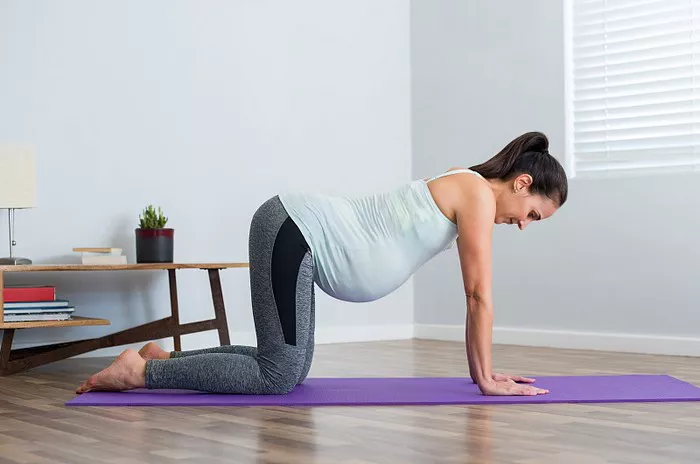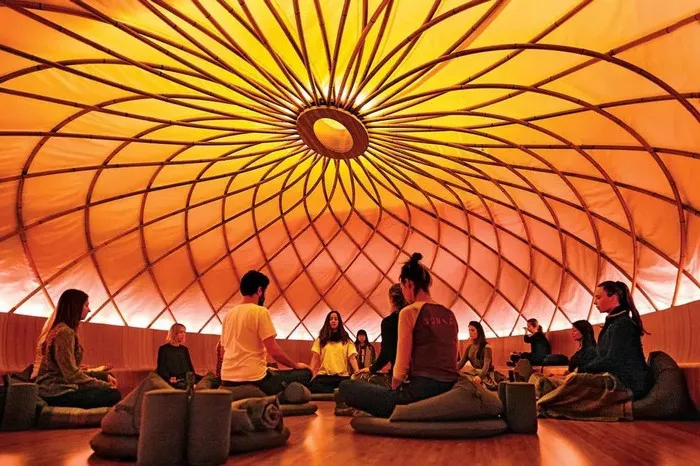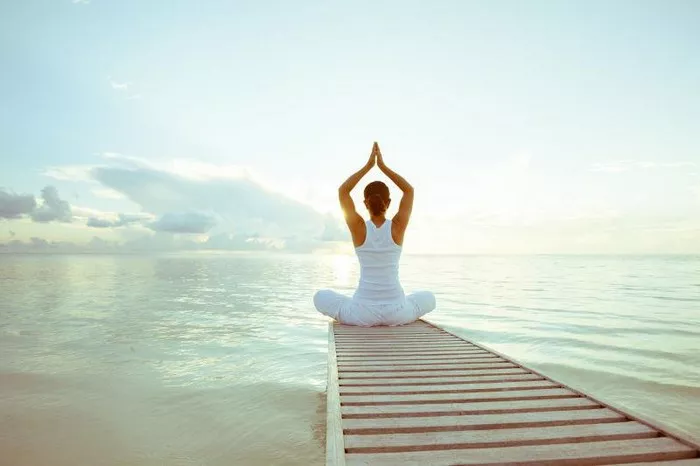Kriya Yoga is a comprehensive and powerful system of yoga that combines physical postures, breathing techniques, meditation, and the cultivation of inner peace. Its primary goal is to bring the practitioner closer to the ultimate truth and experience a heightened state of awareness. Through disciplined practice, Kriya Yoga helps individuals achieve personal transformation, mental clarity, and spiritual enlightenment.
One of the unique aspects of Kriya Yoga is its systematic approach, which incorporates four distinct techniques. These techniques are designed to purify the body, mind, and spirit, ultimately leading the practitioner to a state of union with the divine. In this article, we will delve into the four key techniques of Kriya Yoga and explore their significance and benefits.
1. Pranayama: Control of Life Energy
Pranayama, often translated as the “control of breath,” is the cornerstone of Kriya Yoga practice. In Sanskrit, “prana” refers to the life force or energy that flows through all living beings, while “ayama” means control or regulation. Therefore, pranayama involves the conscious regulation and management of the breath to enhance the flow of prana throughout the body. The ultimate goal of pranayama is to balance the pranic energy within the body and calm the mind, facilitating deeper states of meditation and spiritual awakening.
The Importance of Breath in Pranayama
Breathing is essential for life, but it is also intimately connected with our mental and emotional states. When we are stressed, anxious, or agitated, our breath becomes shallow and rapid. Conversely, when we are calm and relaxed, our breath is slow and deep. By consciously controlling the breath, we can influence our state of mind and regulate the flow of prana. Pranayama techniques can help alleviate mental tension, promote physical health, and improve overall vitality.
Common Pranayama Techniques in Kriya Yoga
Kriya Yoga incorporates several specific pranayama techniques, each designed to serve a particular purpose:
Ujjayi Breath: This is a gentle, slow, and controlled breath that creates a soft sound, often compared to the sound of ocean waves. Ujjayi breath is used to calm the nervous system, focus the mind, and enhance concentration during meditation and asana practice.
Kapalabhati: Also known as “skull shining breath,” kapalabhati involves rapid, forceful exhalations followed by passive inhalations. This technique helps cleanse the respiratory system, energize the body, and increase mental clarity.
Nadi Shodhana (Alternate Nostril Breathing): This pranayama technique involves alternating the breath between the left and right nostrils. It is highly effective for balancing the two hemispheres of the brain, calming the mind, and promoting a sense of inner peace and harmony.
Benefits of Pranayama in Kriya Yoga
- Enhances concentration and mental clarity
- Reduces stress and anxiety
- Balances the autonomic nervous system
- Increases oxygenation and circulation
- Supports emotional stability
- Promotes overall physical health
2. Dhyana: Meditation for Inner Peace
Dhyana, or meditation, is another core technique of Kriya Yoga. While pranayama regulates the breath and prana, dhyana focuses on calming the mind and achieving a state of deep, focused awareness. In Sanskrit, “dhyana” means “meditation” or “contemplation,” and it refers to the practice of turning inward to observe and quiet the mental chatter.
The purpose of meditation in Kriya Yoga is to transcend the limitations of the body and mind and experience the eternal, unchanging nature of the self. By entering deep states of meditation, practitioners can access higher states of consciousness, connect with their inner divinity, and experience moments of profound bliss and stillness.
The Process of Dhyana (Meditation)
Meditation in Kriya Yoga generally follows a specific process that involves concentration, deep breathing, and mindfulness. Practitioners begin by finding a comfortable seated position, usually with the spine erect and the hands resting in a mudra (a symbolic hand gesture). They then focus on the breath or a specific object of concentration, such as a mantra or the point between the eyebrows (the “third eye”).
Over time, with consistent practice, the mind becomes more focused and less prone to distractions. The practitioner gradually enters a state of deep meditation, where the boundaries between the self and the universe begin to dissolve. This state is often referred to as “nirvikalpa samadhi,” a state of pure consciousness.
Benefits of Dhyana in Kriya Yoga
- Develops mental clarity and insight
- Reduces mental distractions and anxiety
- Cultivates inner peace and contentment
- Fosters self-awareness and self-realization
- Promotes a sense of oneness with the universe
- Enhances spiritual growth and enlightenment
3. Asana: Physical Postures for Strength and Flexibility
Asana, or physical posture, is an integral part of Kriya Yoga, though it is not as emphasized as in traditional Hatha Yoga. In Kriya Yoga, asanas are viewed as tools to prepare the body for meditation and to facilitate the free flow of prana throughout the body. The physical postures are designed to strengthen the body, improve flexibility, and support overall health, thus allowing the practitioner to sit comfortably for extended periods during meditation.
The Role of Asana in Kriya Yoga
The body must be in optimal health for the mind to be still and focused. Asanas, therefore, help to release physical tension, improve posture, and stimulate the flow of prana (life energy) throughout the body. By maintaining a healthy, flexible, and strong body, the practitioner can more easily enter deep meditative states without being distracted by physical discomfort.
In Kriya Yoga, the asanas are generally simple and non-strenuous, focusing on the alignment of the spine and the activation of energy channels (nadis). These postures are often held for extended periods, allowing the practitioner to deepen their awareness of the body’s sensations and cultivate a sense of mindfulness.
Common Asanas in Kriya Yoga
Padmasana (Lotus Pose): A seated posture that promotes deep meditation by creating a stable base and aligning the spine.
Sukhasana (Easy Pose): A simple cross-legged posture that helps relax the body and calm the mind.
Ardha Matsyendrasana (Half Lord of the Fishes Pose): A seated twist that helps open the hips and spine while stimulating the digestive system.
Benefits of Asana in Kriya Yoga
- Increases flexibility and mobility
- Strengthens muscles and improves posture
- Relieves physical tension and stress
- Enhances breath control and prana flow
- Prepares the body for meditation
- Supports overall health and well-being
4. Pratyahara: Withdrawal of the Senses
Pratyahara is the practice of withdrawing the senses from external distractions and turning inward. The term “pratyahara” is derived from the Sanskrit words “prati” (against) and “ahara” (food or intake), meaning the withdrawal or retraction of the sensory intake. In other words, pratyahara is the process of disconnecting from the external world and focusing solely on the inner experience.
This technique is often considered the bridge between the external practices of asana and pranayama and the more internal practices of meditation (dhyana) and concentration (dharana). Pratyahara helps to quiet the senses, reduce sensory overload, and cultivate a deeper awareness of the inner self.
The Importance of Pratyahara in Kriya Yoga
In the modern world, we are constantly bombarded with sensory stimuli—visual, auditory, and tactile impressions—that can overwhelm the mind and distract us from our spiritual practice. Pratyahara teaches us how to withdraw from these distractions and turn our attention inward, allowing us to cultivate a more focused and centered state of consciousness.
Practicing pratyahara involves consciously closing the senses, often by sitting in a quiet space, closing the eyes, and focusing on the breath or an internal object of concentration. It is a skill that is developed over time and requires patience, discipline, and self-awareness.
Benefits of Pratyahara in Kriya Yoga
- Reduces sensory overload and mental distractions
- Cultivates inner stillness and mindfulness
- Enhances concentration and focus
- Supports deeper meditation and spiritual insight
- Promotes a sense of inner peace and harmony
Conclusion
Kriya Yoga is a comprehensive and transformative practice that encompasses a wide range of techniques aimed at purifying the body, mind, and spirit. The four core techniques of Kriya Yoga—pranayama, dhyana, asana, and pratyahara—serve as tools to help the practitioner achieve mental clarity, emotional balance, and spiritual awakening. By integrating these techniques into daily practice, one can experience profound personal growth and embark on a journey toward self-realization and inner peace.
Ultimately, Kriya Yoga is a path to greater self-awareness, deeper meditation, and a more harmonious connection with the divine. Through dedicated practice, the practitioner can unlock their highest potential and experience the fullness of life.
Related topics:


























